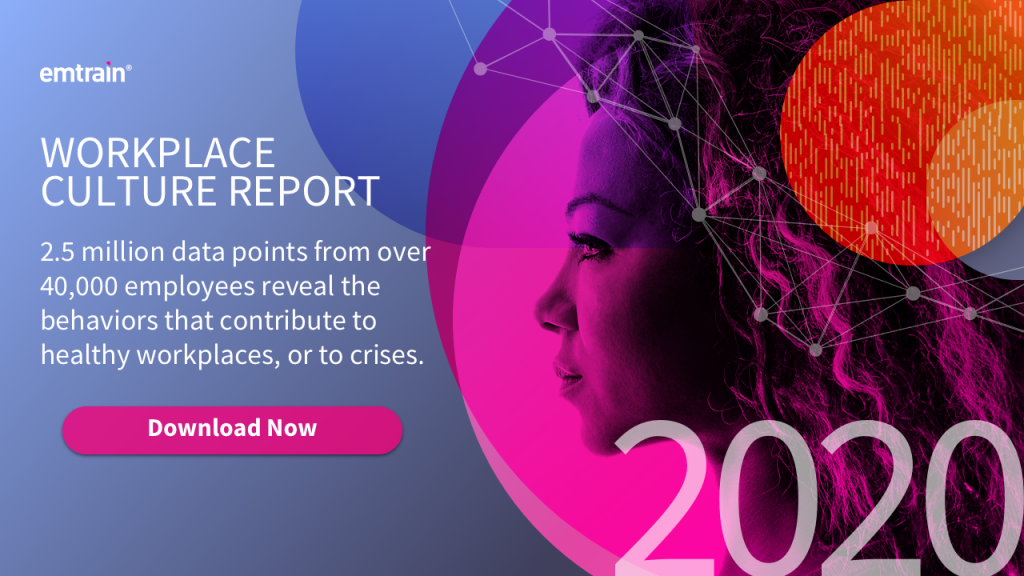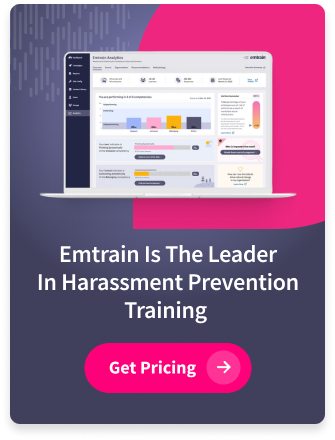30 years of sexual harassment and the system that continues to fail us
It’s been more than 30 years since the United States first passed laws to help protect employees from sexual harassment. Strikingly, just as many people experience harassment today as they did back then (EEOC). Routinely, U.S. employers have provided training to educate employees about appropriate conduct and harassment prevention at the cost of more than $5 billion each year. Why hasn’t this investment moved the needle on minimizing the problem?
More importantly, why are we allowing another generation to enter the workforce and be exposed to harassment, bias, and a lack of basic respect?
It’s because, in an effort to combat harassment, we’ve created an overly simplistic, binary system that has its roots in legal proof instead of recognizing that our interactions and behaviors are based on social dynamics that are non-binary and exist on a spectrum. We’ve treated basic respect as an obviously understood concept rather than a social skill to practice and develop.
What is respect? And if harassment is the opposite of respect, what is harassment? Does the interpretation of what constitutes harassment vary from person to person? For example, does a 50-year-old, white man and a 25-year-old, black woman interpret the same action the same? Or do they view the action in the context of their life experience? We need to take the time to consider that – and to understand the nuances of interpretation in our increasingly multicultural and multigenerational workplace filled with very different life experiences.
And yet, the system uses the same words – harassment, bias, hostile work environment – to describe actions that people interpret differently. One person’s harassment is another person’s awkward joke. It’s a matter of perspective, exacerbated by a lack of social awareness and a breakdown in communication. Compounding this social problem is our legal system, which makes binary judgments of whether an action is or is not harassment, and imposes significant monetary consequences. If the average harassment lawsuit costs $250K, businesses are incentivized to circle the wagons and defend themselves rather than diagnose the issue and truly try to solve the problem.
So, how do we solve this now?
After about a decade of providing online compliance training and seeing these challenges up close, we introduced a shared language to allow people to color code how they interpreted workplace actions. Our goal was to be more specific and contextual than a one-word descriptor like “harassment,” and to allow people to communicate more effectively on these issues. Emtrain’s Workplace Color Spectrum provides a language that supports effective communication around respectful conduct. Within our online content, we shared how the entire learning community color-coded certain actions that were illustrated in our video scenes. As expected, we found that people from different demographics color-coded actions differently.
Along with introducing the Workplace Color Spectrum, we introduced an “ask the expert” feature allowing employees to ask questions confidentially to Emtrain’s subject matter experts. As we’ve received over 5,000 questions from employees about harassment, bias, ethics, and code of conduct, we’ve started to observe patterns in how different types of people color-coded actions differently. More importantly, we started to see the sources and triggers for harassment, bias, and other workplace conflicts. We then leveraged our learning to systematically decode basic culture problems like harassment and bias into specific situational dynamics that we could diagnose and measure.
Last year, we launched Emtrain AI, a brand new solution, that diagnoses and measures the indicators of basic culture problems within the training experience. Our goal: real behavior change, informed by real data on the situational dynamics that lead to basic culture problems.
Today, we have a database of workforce insights with over 2.5 million responses from 40,000+ employees at 125 companies, which prompted us to write our first ever Workplace Culture Report 2020, based on the data from our Workplace Culture Diagnostic. The early results are fascinating.
We are still in the early days.T o bring this important work to the next level, we are looking to collaborate with a community of people on the front lines of workplace culture.
If you’re interested in collaborating with us, leave a comment below or contact us directly.
Download Emtrain’s Workplace Culture Report 2020 available now .
If you’d like to stay posted on our journey, follow Emtrain on LinkedIn.









